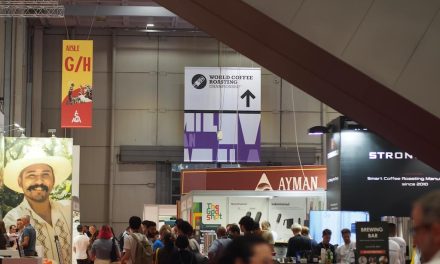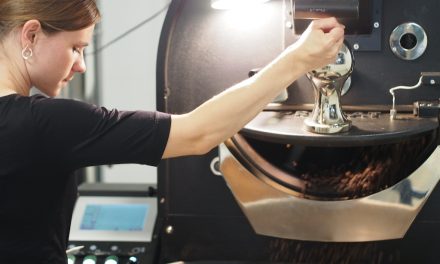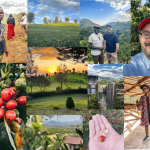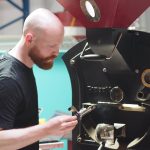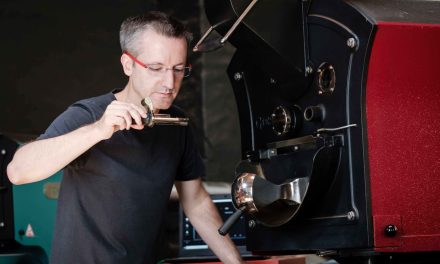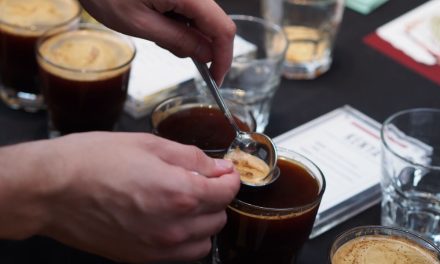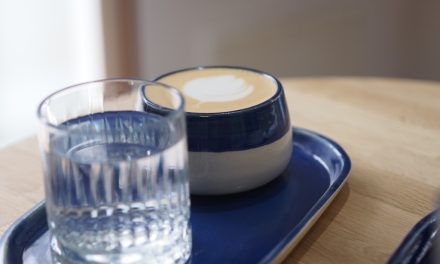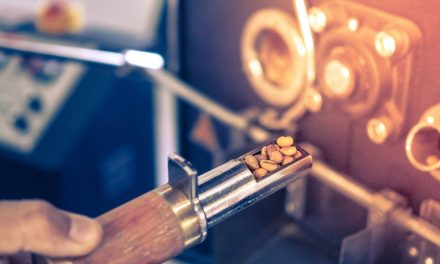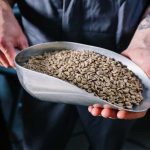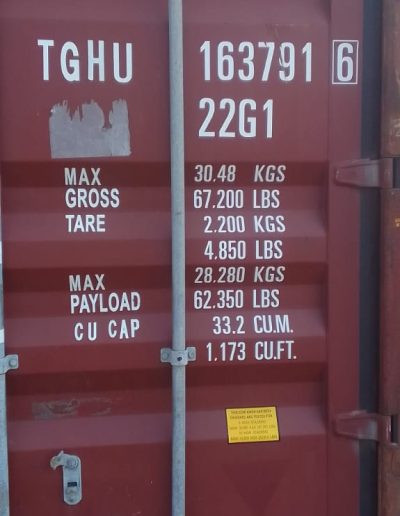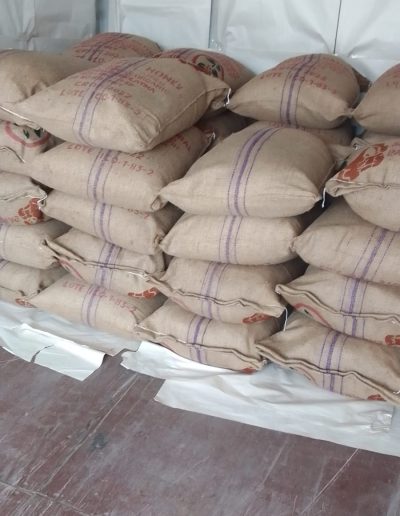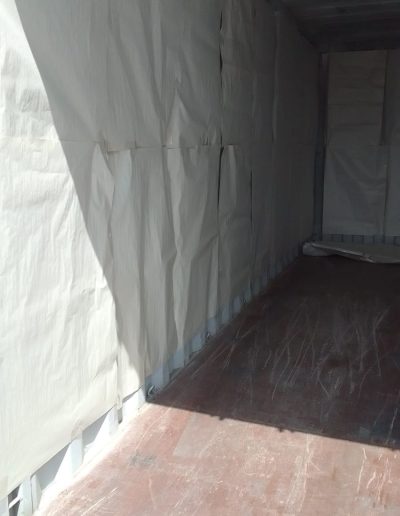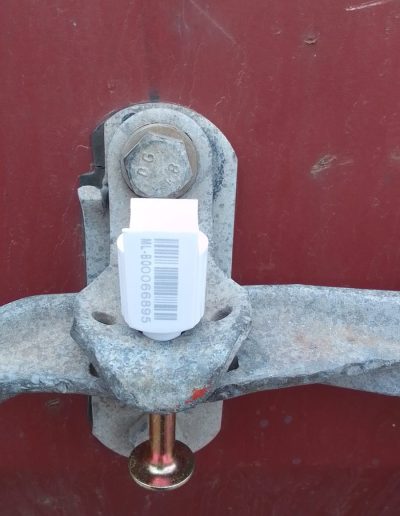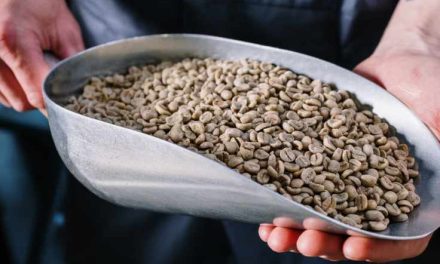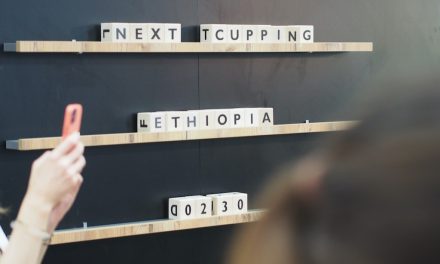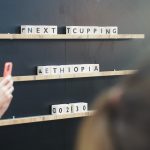
How did that happen, Ann-Kathrin: You just started your roasting plant and directly imported a container of green coffee?
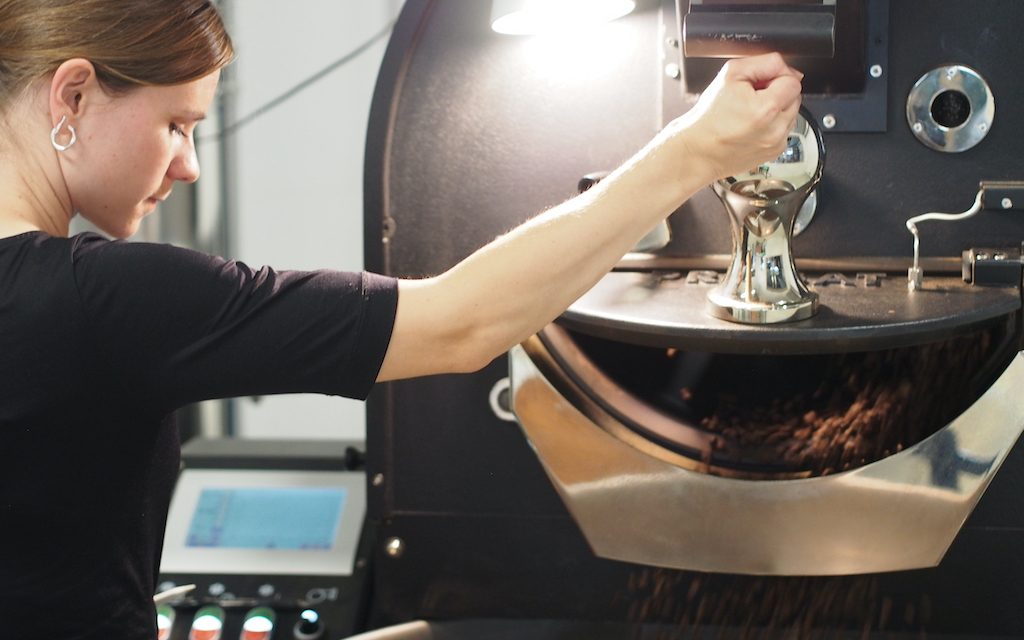
Imagine you are setting up your own roasting plant. And the first thing you do is…? Exactly, import a container of green coffee yourself.
What Ann-Kathrin did for her roasting plant Caraya Coffee is, of course, an exception in the big wide world of start-ups. And that’s exactly why a hundred questions arise, isn’t it?
We took 19 of them and asked them for your already.
This article is for you if
you have always wondered how to actually import a container of green coffee
you want to get a deeper insight into the coffee country Bolivia
you are wondering where and how to actually start and what it can cost to import a container yourself
you are wondering what kind of coffee roastery it might be worthwhile for you to import yourself
You imported a container of green coffee from Bolivia yourself. How many bags or tons were in your first container?
Well, it was around 100 or 120 bags of 60 kg each.
And what about the ratio of Arabica to Robusta? Is that possible to say?
All Arabica. Because at the time I didn’t know that Canephora existed in Bolivia. I only found out recently. But it only just started, with specialty fine Robusta. That’s new. Only specialty arabica has been relevant in Bolivia for five to six years. And now Canephora is slowly catching up.
And with the next container, will there be a little bit of fine robusta from Bolivia?
I hope so. But there is still time, because the harvest has been postponed. That would be one or two bags, maybe. But it’s just a very small amount, yes. Maybe next year.
Who supplies your 120 bags of coffee?
They come from a single cooperative. We had no contacts upfront, so my husband and I googled and brainstormed, and we had a lot of Zoom calls. At the beginning, we were in contact with three different cooperatives, then it was down to two, and after the pre-shipment samples, it was just one.
Not because the others didn’t have good coffee, but exporting with more people got more complicated. And the one cooperative had already a nice portfolio with different green coffees. They have almost 300 members, and they are mostly families who harvest and deliver their coffee cherries. But there are also a few who process the coffee at home.
I also have a raw coffee that is blended, so to speak, by almost all cooperative members. It still gets over 80 points. But there is also a natural and a honey. They have selected only cherries from an altitude of 1,500 meters. And then only from those who bring their coffee cherries nicely sorted, thus from producers who have generally put more effort into it. They also get a little more pay for it. And that motivates them, that they get a little more than for the cooperative blend. But as a result, we have 4 different green coffees from the same cooperative. The coffees all come from different altitudes and from the same source, which I think is quite good.
And you probably only have one point of contact.
Yes, exactly, there is a contact person who is also relatively young and motivated. I only got to know him personally this year. And the cooperative has been around for over 30 years. And I’ve heard good feedback about him from other people in Bolivia, and also about the cooperative. That makes me feel a little better. But actually, the first impression was only via WhatsApp, and of course by receiving the samples.
That sounds brave. Did you feel like you were buying a pig in a poke?
Yes, I’d say it was risky too. But I got the samples beforehand. Maybe I’ll say exactly where the cooperative is. It’s about six hours from La Paz, in the Caranavi region, and then it’s the village of Taipiplaya and 40 communities around it. And they all bring their coffee to Taipiplaya. It takes almost 1.5 hours to get there, but this Beneficio Humedo, as it is called, is in Taipiplaya. Yes, that could have gone wrong.
But it did not, right?
Yes, that were my thoughts afterwards too.
I also cupped the coffees here at Communal Coffee when a roaster said to me, “Oh, congratulations, you have great coffees, you can be proud of yourself!” I thought to myself, “Thank God!”
Though, it’s not my achievement all alone. Thank God everything worked out the first time. Especially with the quantity. I wouldn’t do it that way once more. My thinking was: the container is expensive, the import/export is totally laborious, and once I have it here, it’s fine, and thus I’ll take more right away, even for the first order.
But I’m also importing less this year. I can reorder every year, and it’s nicer to grow together with them. Instead of having to scale down every year.
When you describe the import and export process, it sounds very laborious. What makes it so laborious?
First of all, it’s hard to get certain coffees in a certain quality. And then it’s hard to get them in a certain quantity at all, because Bolivia doesn’t generally produce a lot. On top of that, specialty coffee only started there three or four years ago.
That means that these were the second Naturals and Honey that they had ever made. And I thought they were already pretty good. I then thought, I liked the pre-shipment samples so much that I erally would have the coffee here. Who knows what the harvest will be like next year.
But it was also the case that Bolivia has no access to the sea, so no port. That’s why it seemed difficult at the beginning to get a container into the country. That was in mid-2022, when the situation had just resolved itself after Covid, so that containers worldwide were back on track to some extent.
But at the time when I wanted to export, I still had to wait 4 to 5 weeks for a container. Because it first has to be transported inland from Chile. There is a Maersk warehouse where all the containers are stored. All of this seemed complicated to me! I thought that the container would then have to be transported from the cooperative in Bolivia to Chile, but in the end, the cooperative took care of it as an exporter.
I think it was more my lack of knowledge and the fact that I was at the beginning and had to learn new things. But now it doesn’t seem so complicated anymore.
The cooperative took care of all the paperwork, including the paperwork for Chile and so on. I bought FOB, so I got it delivered to Chile, to the port, and from there on I was responsible, so to speak.
That means the cooperative took care on the delivery of the container to them, loaded it and sent it off to the port of Chile. And then they said: “Ann-Kathrin, this is now your container.”
Do I understand that correctly?
Exactly. For the cooperative, this was also a challenge. I would say we procured the container together. I couldn’t reach anyone at Maersk in Bolivia, and then I ended up at HH Süd here in Germany.
In any case, my contact at HH Süd brought me in touch with someone directly in Bolivia. And through the direct contact in Bolivia, which the cooperative then contacted, we then received the container. It was a bit impractical. I would say that if you don’t speak Spanish or couldn’t communicate with the person directly, the whole thing would have not become accessible.
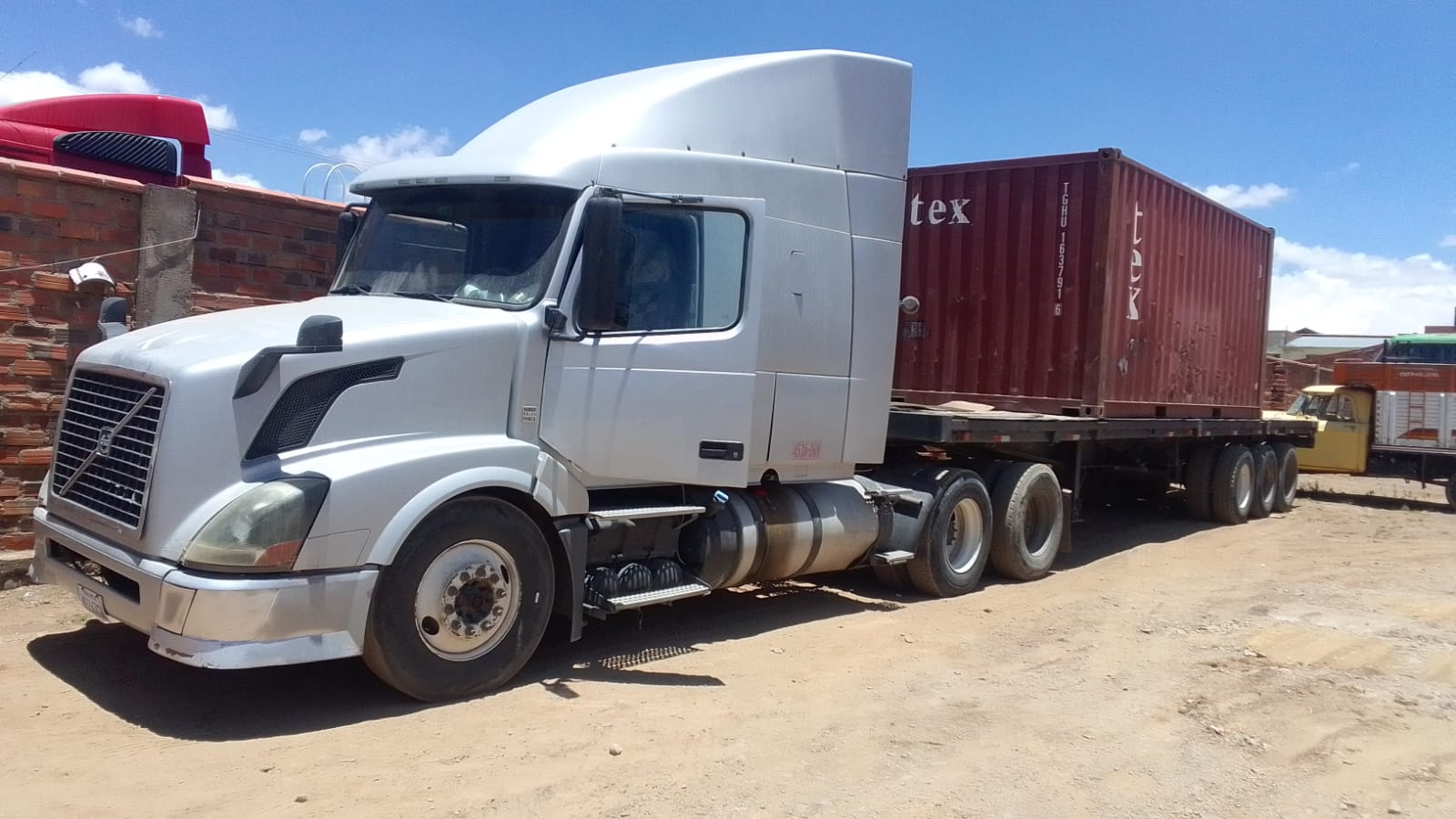
And then I imagine it like this: a truck arrives with a 20-foot container, unloads it, and the cooperative load the bags into it?
Well, yes and no. The cooperative had to order the truck and pick up the container itself from the Maersk central warehouse. Then load it, and then they had to seal it on site. All the papers are also included. In any case, it was them who picked up the container.
The truck with the container then goes to the port in Chile and then takes the next ship from there?
Yes, exactly. It doesn’t stand there for long, then it goes relatively quickly onto the next ship, and then I think it has two transfers. So once in Peru and once in Panama.
You can imagine it like a train transfer.
Yes, the container then transfers to different ships. Exactly.
Can you monitor that too? Is there a tracking code?
I was able to track it. I could always see where it was in the ocean, thanks to this startup by Maersk called Twill. That was much more accessible than Maersk itself. Twill is a subsidiary, and they have digitized everything. That means I could also upload everything online, and the cooperative could upload the export papers online, and I didn’t need the originals or anything like that. It was relatively straightforward.
That means your contract is with Maersk and they bring the container, so to speak, to Hamburg or Bremen?
Exactly, but they also do services such as customs clearance. I could have also organized door-to-door transport, and theoretically I could have organized the transport from the cooperative to Chile. But since I was still so new, I let them do it.
However, now they have actually implemented the individual steps because of me and my case. You couldn’t book from La Paz before. But since last year they have implemented it and now you can book transport from La Paz and La Paz is displayed as a port, even though it is not a port. But now they have their interfaces.
And Maersk ships the container to Hamburg and also takes care of customs clearance for you?
Exactly. My container was also stopped and searched for cocaine. Afterwards I was told that every container coming from Bolivia is searched for cocaine. But I didn’t know that and so I paid the demurrage. Twill organized it for me relatively quickly, because the longer the container is stopped, the longer I have to pay, even though I’m not importing any cocaine.
But I have to pay for the control, so to speak. Also, I was super grateful because they informed me immediately, and then within 5 minutes, they said they would now put pressure on the guys for the check not to leave it standing for too long. That was really good of them. Because you couldn’t have done that yourself. So they had their contacts in place at customs, exactly.
And how much does a demurrage cost?
I paid 500 euros for one hour, something like that. But I recall that it was very expensive, and I thought, “Oha,”! I didn’t factor that in last time, but now I know what to expect.
Was there anyone who helped you with the financing? When I buy 120 bags of green coffee, that’s quiet a few euros.
Yes, I have a loan from a company that belongs to my uncle. At the time, the interest rate at IBB (Investment Bank of Berlin) was over 7%, so I could have gotten something from them, too. But I didn’t want to use that offer at 7%, and I could get something from my uncle’s company with much better conditions. Taht loan still had to be at market rates, because it can’t be a gift, but the conditions were more accommodating than at IBB. Exactly, that’s what I did, and that’s how it stays in the family.
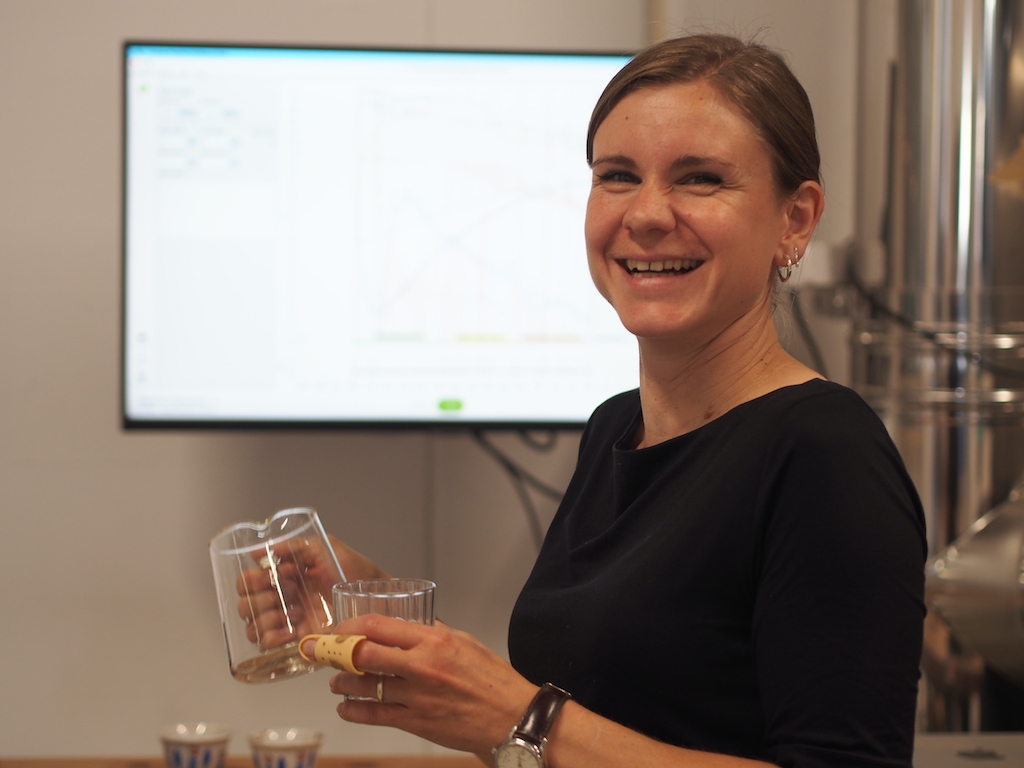
You once said that after going through the whole process, you realized “that’s so easy, why doesn’t every roaster do this?”
Is that still the case?
Now, I wouldn’t recommend to every roaster that they get their own container from every country due to the high fixed costs. It’s still good for me because I only focus on Bolivia. From a process point of view, it’s super easy. In the meantime, I’m already questioning whether you absolutely have to import the container yourself or whether you can’t buy from someone who you know trades directly. I think that’s just as ethically correct.
But in my case, there was simply nothing from the origin on the German market, at least not from this cooperative or of the same quality.
Exactly, that’s why I plunged into it. But if, let’s say, a roastery works with three origins, and one of them is getting bigger, I definitely recommend this platform Twill.
So I can also say what I paid in total, that was 6,000 euros in the end, including the demurrage. It may be cheaper from other countries, but the good thing is that you can see how much it costs on the platform beforehand. It’s a bit like Deutsche Bahn Online (German Railway). Simply enter the route and the prices and availability are displayed immediately. It also fluctuates a bit from week to week. Very practical. You can just check how much it would cost.
From how many bags per origin on would it be worth thinking about, in your opinion?
Nah, I think that’s something everyone has to decide for themselves. For me it was half a container. I said at the time, that I wouldn’t do it for less than half a container because the fixed costs are so high. Now I would also take a quarter of a container. If there’s nothing else available anywhere.
But I would do my research beforehand. But I’ve also heard from others that some of them only had a quarter of a container at first, and then grew over the years. It depends on your intention. If you want to grow with the origin, I think it makes sense to take less at the beginning too.
You are now specializing in one origin. Is it possible that Caraya Coffee will add coffee from another country?
I don’t think so in the next five years. This year it was the first time I’ve been to Bolivia just for coffee, and not for leisure. There’s just so much I didn’t even think of! I also tried some coffees that reminded me more of African origins. There are so many microclimates and regions in Bolivia that haven’t been fully explored yet.
For example, I have now tried something from a region that no one has ever had on their radar before: coffee from the Cochabamba region. Before, everyone only had La Paz or Santa Cruz on their radar, if at all. But something is also happening in Cochabamba, and it is again a completely different taste. In Bolivia, they always have a national tournament, a competition, and the first five winners are all from the Cochabamba region. It’s really great coffee.
With Caraya Coffee, I’m not that big yet, but I hope that when I grow, I will be able to represent several origins from Bolivia because they are so different. And that’s actually my wish. And right now I don’t see any other origin.
And as a final question: where in Germany is your green coffee stored?
In Hamburg and a small amount here, at Communal Coffee.

